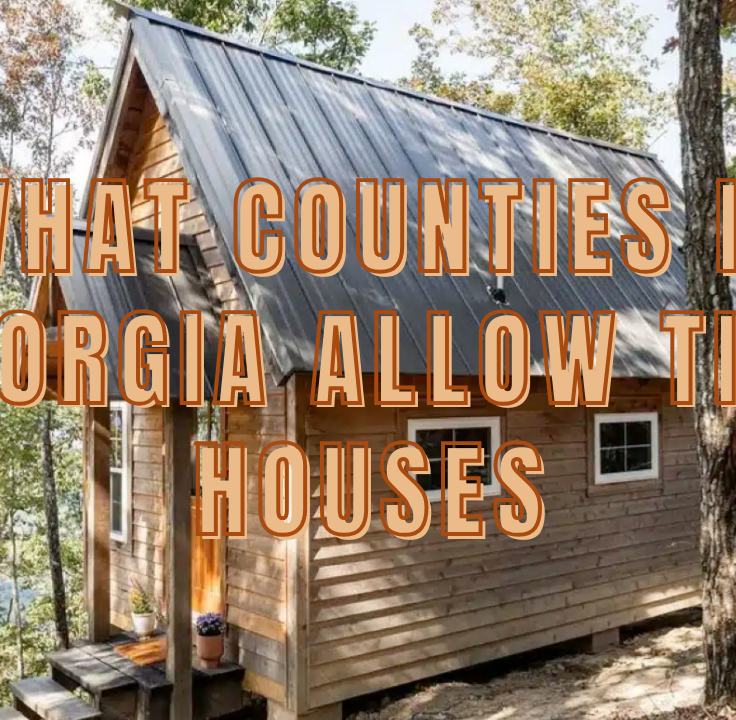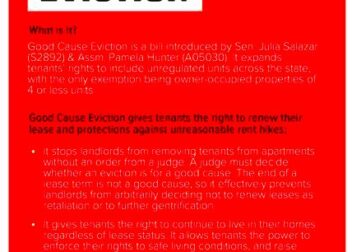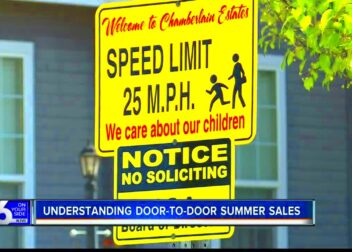Exploring Georgia Tiny House Laws and Regulations
Tiny houses have gained popularity in Georgia for various reasons, including affordability, minimalism, and sustainability. These small homes typically range from 100 to 400 square feet, offering an alternative lifestyle for those looking to downsize. In Georgia, tiny houses can be a great solution for first-time homebuyers or retirees seeking to simplify their living arrangements. However, understanding the laws and regulations surrounding tiny houses is essential to ensure compliance and avoid potential legal issues.
Understanding Tiny House Definition in Georgia
In Georgia, the definition of a tiny house can vary depending on the context. Generally, a tiny house is defined as a dwelling that is significantly smaller than traditional homes, often built on trailers or foundations. Here are some key points to consider:
- Size: Tiny houses typically range from 100 to 400 square feet.
- Foundation: Some tiny houses are built on wheels, while others are on permanent foundations.
- Design: These homes can be custom-designed or prefabricated, focusing on efficiency and sustainability.
Understanding these definitions helps in navigating local zoning laws and regulations related to building and living in tiny homes.
Zoning Regulations for Tiny Houses in Georgia
Zoning regulations play a crucial role in determining where tiny houses can be placed in Georgia. Different cities and counties have varying rules, so it’s essential to research the specific area where you plan to live. Here are some common zoning considerations:
- Residential Zoning: Many areas require tiny houses to be located in zones designated for residential use.
- Minimum Lot Size: Some jurisdictions have minimum lot size requirements that must be met for tiny houses.
- Setback Requirements: Tiny houses may need to adhere to specific setback regulations from property lines or roads.
- Use as Accessory Dwelling Units (ADUs): In some areas, tiny houses can be used as ADUs, providing additional living space on a single property.
It’s vital to check with local planning and zoning offices to ensure compliance with all regulations before moving forward with your tiny house plans. Doing so can help avoid fines or the need to relocate your home.
Building Codes and Safety Standards for Tiny Houses
Building codes and safety standards are essential for ensuring that tiny houses are safe and livable. In Georgia, tiny houses must meet specific criteria to comply with local building codes. Understanding these codes is vital for anyone looking to build or live in a tiny home. Here are some key aspects to consider:
- Construction Standards: Tiny houses must be constructed according to local and state building codes. This includes standards for structural integrity, plumbing, electrical systems, and fire safety.
- Insulation Requirements: Proper insulation is crucial for energy efficiency and comfort. Georgia’s building codes often specify insulation values to maintain temperature control.
- Utilities: Tiny houses must be connected to approved utility systems, including water, sewage, and electricity. Adhering to local requirements ensures safety and functionality.
- Health and Safety Inspections: Most jurisdictions require inspections during and after construction to verify that tiny houses meet safety standards.
Before starting a tiny house project, it’s essential to consult local building authorities to understand specific codes and ensure compliance. Following these guidelines not only keeps you safe but can also prevent future legal issues.
Permitting Process for Tiny Houses in Georgia
The permitting process for tiny houses in Georgia can vary widely depending on the local jurisdiction. However, understanding the general steps involved can help you navigate the process more smoothly. Here’s a quick rundown of what to expect:
- Research Local Requirements: Start by checking with your local zoning and planning office to understand the specific permits required for tiny houses in your area.
- Submit Permit Application: Fill out and submit a permit application, providing detailed plans for your tiny house. This may include site plans, floor plans, and details on utilities.
- Review Process: Local authorities will review your application to ensure it meets zoning and building codes. Be prepared to answer any questions or make adjustments to your plans.
- Obtain Final Approval: Once your application is approved, you will receive the necessary permits to proceed with construction or placement of your tiny house.
It’s essential to be patient during this process and ensure that all required documentation is submitted accurately. A thorough understanding of the permitting process will save you time and prevent setbacks down the road.
Impact of Tiny Houses on Property Taxes
One of the appealing aspects of tiny houses is the potential for lower property taxes compared to traditional homes. However, the impact of tiny houses on property taxes in Georgia can vary based on several factors:
- Assessment of Value: Tiny houses are typically assessed at a lower value than larger homes. This can lead to lower property taxes, making tiny living an attractive option for budget-conscious individuals.
- Location Matters: Property tax rates vary by county and city. It’s essential to research how local governments assess property taxes for tiny houses, as some may have specific rules in place.
- Permanent vs. Temporary Structures: If a tiny house is on wheels, it may be treated differently in terms of taxation compared to a permanent structure. Understanding these distinctions can impact your tax liabilities.
- Potential Tax Incentives: Some areas offer tax incentives for sustainable living or alternative housing solutions, which could benefit tiny house owners.
Before committing to a tiny house, it’s wise to consult with a local tax assessor or financial advisor. This way, you can gain insight into the specific tax implications and make informed decisions.
Community Regulations for Tiny House Living
Living in a tiny house often means being part of a community that has its own set of rules and regulations. These community regulations are essential to ensure harmony among residents and maintain the overall appeal of the area. Here’s what you should know:
- HOA Rules: If your tiny house is located within a homeowners association (HOA), you’ll need to follow their specific guidelines regarding aesthetics, property use, and maintenance.
- Community Zoning: Some communities may have zoning laws that limit where tiny houses can be placed, particularly concerning density and proximity to other homes.
- Shared Amenities: Tiny house communities often feature shared amenities, such as communal kitchens, gardens, and recreational areas. It’s important to understand the rules governing these shared spaces.
- Parking Regulations: If your tiny house is on wheels, check local parking regulations. Some areas have designated parking spots, while others may require permits.
Engaging with your community and understanding these regulations can create a more enjoyable living experience in a tiny house. It’s always best to read up on the community guidelines before making a commitment.
Challenges and Benefits of Living in a Tiny House
Living in a tiny house comes with its own unique set of challenges and benefits. Understanding these can help you decide if this lifestyle is right for you. Let’s break it down:
- Benefits:
- Affordability: Tiny houses generally cost less to buy and maintain compared to traditional homes, allowing for financial freedom.
- Minimalist Lifestyle: With limited space, tiny living encourages a simpler lifestyle, reducing clutter and focusing on what truly matters.
- Environmental Impact: Tiny houses often use fewer resources and generate less waste, making them a more sustainable living option.
- Challenges:
- Space Constraints: The limited square footage can make storage and organization tricky, requiring creative solutions.
- Zoning Issues: Navigating local laws and regulations can be challenging, especially in areas that may not be familiar with tiny homes.
- Community Acceptance: Some communities may not embrace tiny houses, leading to potential conflicts with neighbors.
Despite the challenges, many find that the benefits of living in a tiny house far outweigh the downsides. It’s all about finding the right balance for your lifestyle!
Frequently Asked Questions about Georgia Tiny House Laws
When it comes to tiny houses in Georgia, many people have questions about laws and regulations. Here are some frequently asked questions to help clarify:
- What is the minimum size for a tiny house in Georgia?While there is no specific minimum size defined, most tiny houses fall between 100 and 400 square feet.
- Do I need a permit to build a tiny house?Yes, you typically need a permit. The requirements can vary by location, so check with your local zoning office.
- Can I live in a tiny house on wheels?Yes, but you need to follow local regulations regarding parking and use. Some areas may require a special permit for mobile tiny homes.
- Are tiny houses considered permanent or temporary structures?This depends on local regulations. If your tiny house is on a foundation, it may be considered permanent, while houses on wheels might be temporary.
- What are the property tax implications of owning a tiny house?Property taxes for tiny houses tend to be lower than traditional homes, but this can vary based on local assessments.
Understanding these common questions can help you make informed decisions about living in a tiny house in Georgia.
Conclusion on Georgia Tiny House Laws and Regulations
Living in a tiny house in Georgia offers a unique lifestyle filled with opportunities for simplicity and sustainability. However, navigating the laws and regulations surrounding tiny homes is crucial for a smooth experience. Understanding local zoning laws, building codes, and community regulations ensures that your tiny house remains compliant and enjoyable. Remember that while tiny living can significantly reduce costs and encourage minimalism, it also comes with its own set of challenges, such as limited space and potential community pushback. By being well-informed and proactive, you can successfully embrace the tiny house movement in Georgia while enjoying the benefits of a simpler, more intentional way of living.


